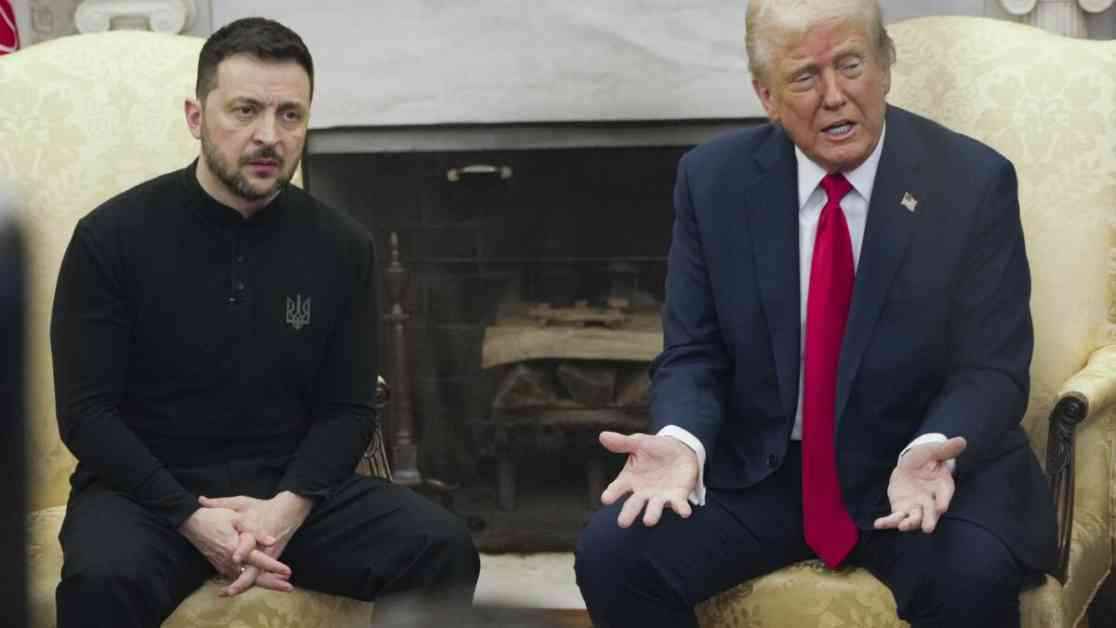In an unprecedented turn of events, an intense diplomatic standoff unfolded in the Oval Office, where President Trump and Vice President JD Vance publicly confronted Ukraine’s President, Volodymyr Zelensky, leading to a heated exchange of accusations and tensions. The meeting was initially set for the signing of a joint agreement on access to Ukraine’s rare-earth minerals, with both sides expressing complimentary terms and highlighting the significance of the deal for the future of Ukraine.
However, what started as a cordial meeting quickly spiraled into a verbal altercation when Vance accused Zelensky of undermining Trump in public, triggering a series of sharp exchanges between the parties involved. The Ukrainian president, in turn, emphasized the need to address Russia’s territorial ambitions and the necessity of security guarantees to end the ongoing conflict, emphasizing that a mere ceasefire was not a viable solution.
Trump, on the other hand, expressed dissatisfaction with Zelensky’s alleged lack of gratitude for U.S. assistance, highlighting the need for compromise in any potential deals between the two countries. The meeting took a dramatic turn as Trump and Vance warned Zelensky about the diminishing resources of the Ukrainian military, urging him to consider the consequences of not reaching a satisfactory agreement.
As tensions escalated, Zelensky pushed back against the accusations, engaging in a direct confrontation with Trump and Vance, displaying a level of defiance that surprised many observers. The atmosphere in the room was tense, with Ukraine’s ambassador visibly distressed, and U.S. Secretary of State Marco Rubio appearing uncomfortable as the situation deteriorated.
The fallout from the meeting was significant, with Trump and Zelensky canceling a joint news conference, and the mineral deal remaining unsigned. Trump took to social media to express his disappointment, suggesting that Zelensky was not ready for peace if America was involved, citing a perceived advantage in negotiations. Zelensky, in response, thanked the American people for their support and reiterated his commitment to achieving lasting peace.
The joint appearance in the Oval Office sent shockwaves through the political landscape, with Democratic lawmakers expressing concern over the handling of the meeting, and some Republican officials criticizing Trump’s approach. Rep. Don Bacon of Nebraska condemned the events as a setback for America’s foreign policy, emphasizing the importance of supporting Ukraine in its quest for independence and security.
Despite internal and external criticism, Trump’s cabinet members praised his “tough” stance during the meeting, with Russian leadership also commending the president’s actions. European leaders called for continued U.S. support for Ukraine, highlighting the need for a coordinated effort to prevent further escalation of the conflict.
As the aftermath of the Oval Office meeting reverberated across the international stage, questions arose about the future of U.S.-Ukraine relations and the potential implications of Trump’s approach to diplomacy. With conflicting narratives emerging from different sides, the path to peace in the region remains uncertain, as key stakeholders navigate the complex dynamics of global politics and security.
The events in the Oval Office underscored the fragile nature of diplomatic relations in a volatile geopolitical landscape, where disagreements and misunderstandings can have far-reaching consequences. As the world watches and waits for the next chapter in this unfolding drama, the stakes have never been higher for those involved in shaping the future of international affairs.


